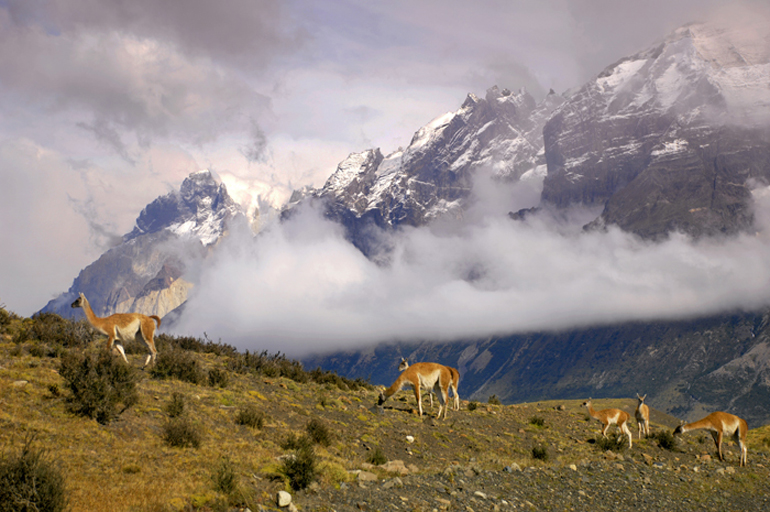
Compared to Africa with its rich diversity of grazing animals, South America is poor indeed. Ranging from the vast Patagonian steppe to the highlands of Peru, the guanaco is the sole large wild herbivore. As such, this 200 pound camelid (like a camel) was vital to local Indians in times past, supplying them with meat, wool, hides for shelter, sinew for sewing, and images for their mythology. As with bison on the North America prairie, the hunting activities of indigenous peoples had little impact on the species' population.
Before the arrival of Europeans guanacos roamed their range in numbers estimated at tens of millions. Early explorers reported herds several thousand strong in Tierra del Fuego and Patagonia. But that was then and sheep are now. Although commercial hunting in the early 1900s began to take a toll, the real death knell for the guanaco came with the establishment of large sheep estancias (ranches) throughout Patagonia. Almost overnight the king of the steppe had a serious competitor. Numbers plummeted to perhaps 100 thousand, mostly clustered in protected areas at the continental tip.
So the guanaco is now threatened thoughout much of Chile and Peru. High profits from the fur trade, remoteness of the guanaco's range, and lack of funds in these developing economies have hampered conservation efforts. There is growing support for protection, however, as a new wildlife awareness spreads around the world. And as ecotourism becomes increasingly important in second and third world countries, there emerges a practical reason to save wildlife. Species like the guanaco have begun to "pay rent" on the space they occupy!